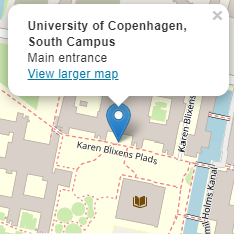Womb-Caves of Mongolia and Wutai Shan (China): A Ritual of Fertility or of Rebirth?
Lecture by Isabelle Charleux, director of researches at CNRS (National Centre for Scientific Research/GSRL (Group Societies, Religions, Laicities)), EPHE-PSL, Paris.
Abstract
The ritual of crawling into a narrow “womb-cave” is documented in Mongol areas for the nineteenth and early twentieth century and can still be observed today, for instance at Tövhön Khiid in Arkhangai Province, Mongolia, at Lovonchimbu süme in Inner Mongolia, or at Alkhanay in Buryatia. It is also a very popular ritual at Wutai Shan (Shanxi Province, China), a major Buddhist pilgrimage site for Chinese, Mongols and Tibetans in the modern period (sixteenth-early twentieth century). The womb-cave ritual is interpreted differently by the clergy and the laity – when it is not condemned by the Buddhist clergy. This paper argues that the womb-cave ritual is an ancient Inner Asian ritual and connects different Mongol pilgrimage sites with Wutai Shan.

